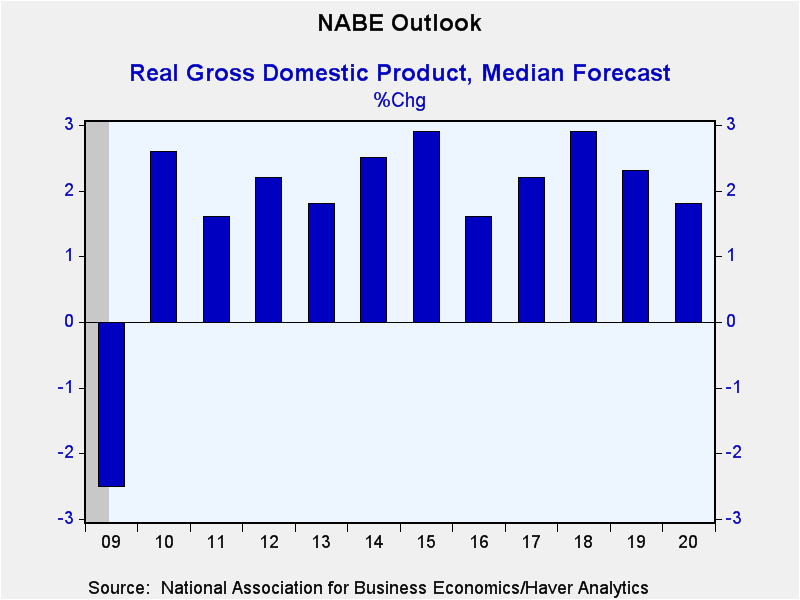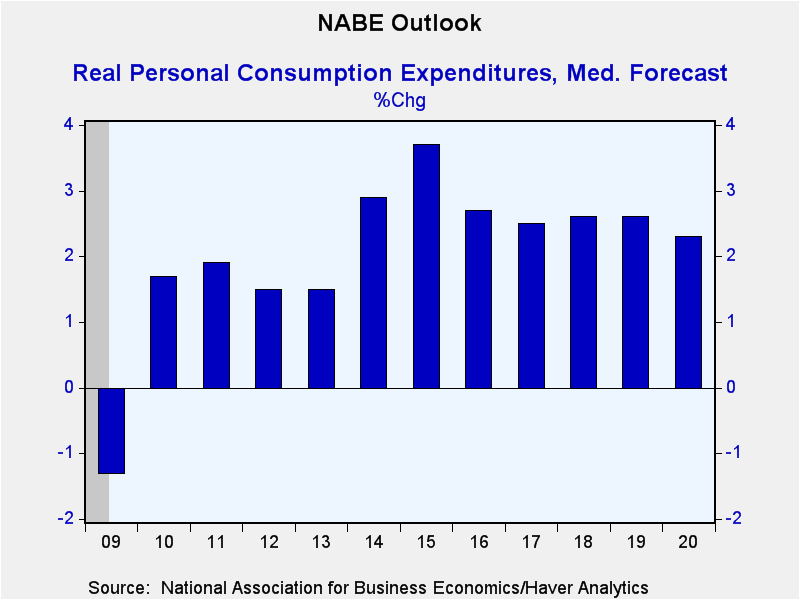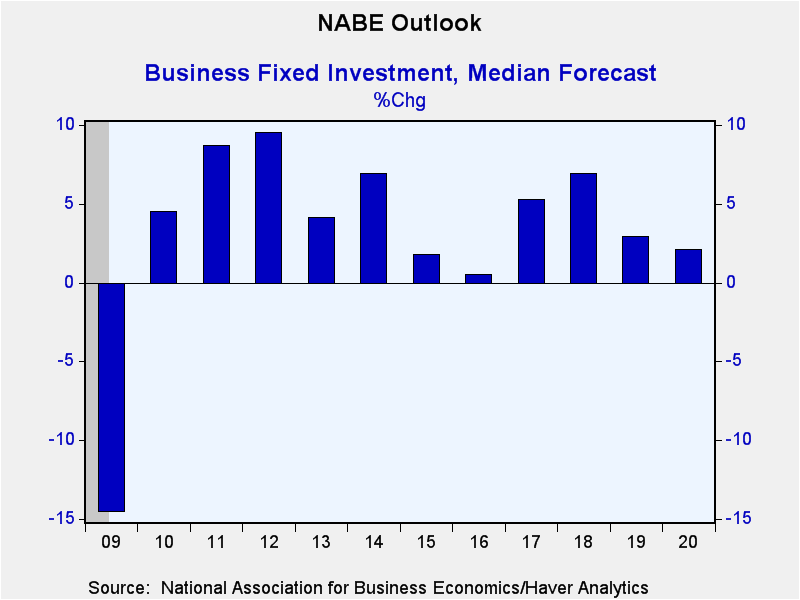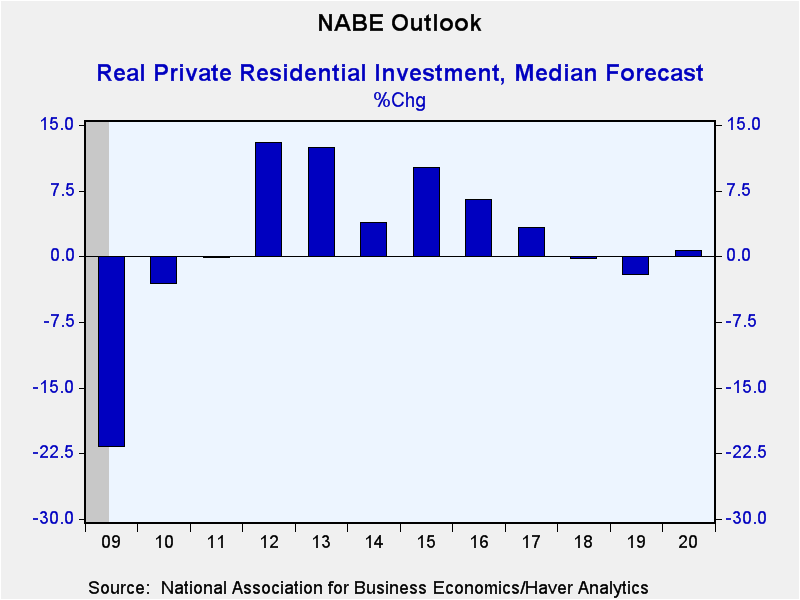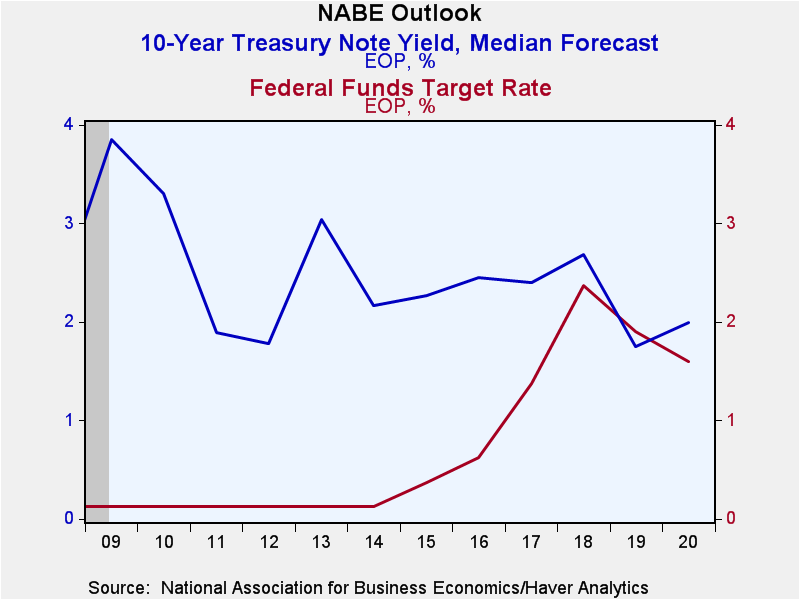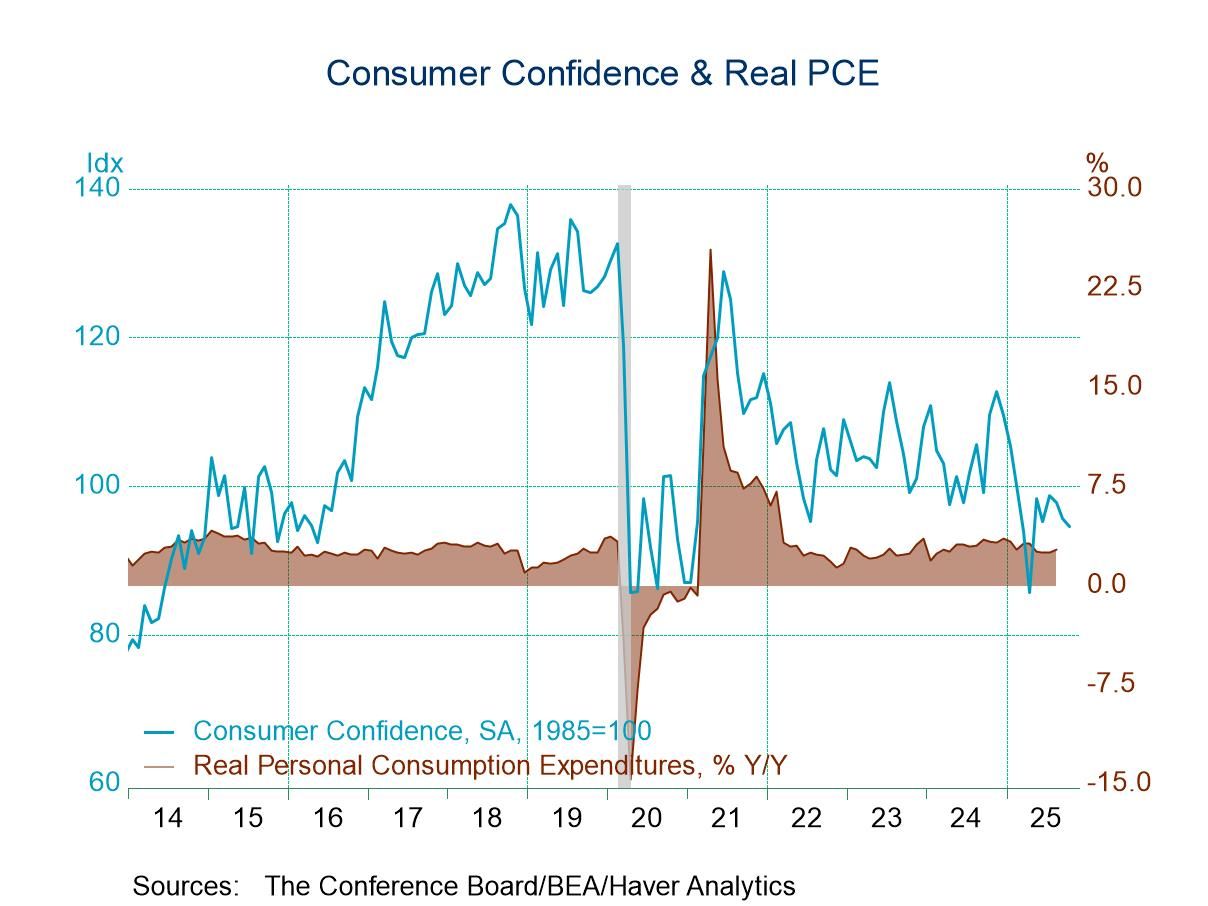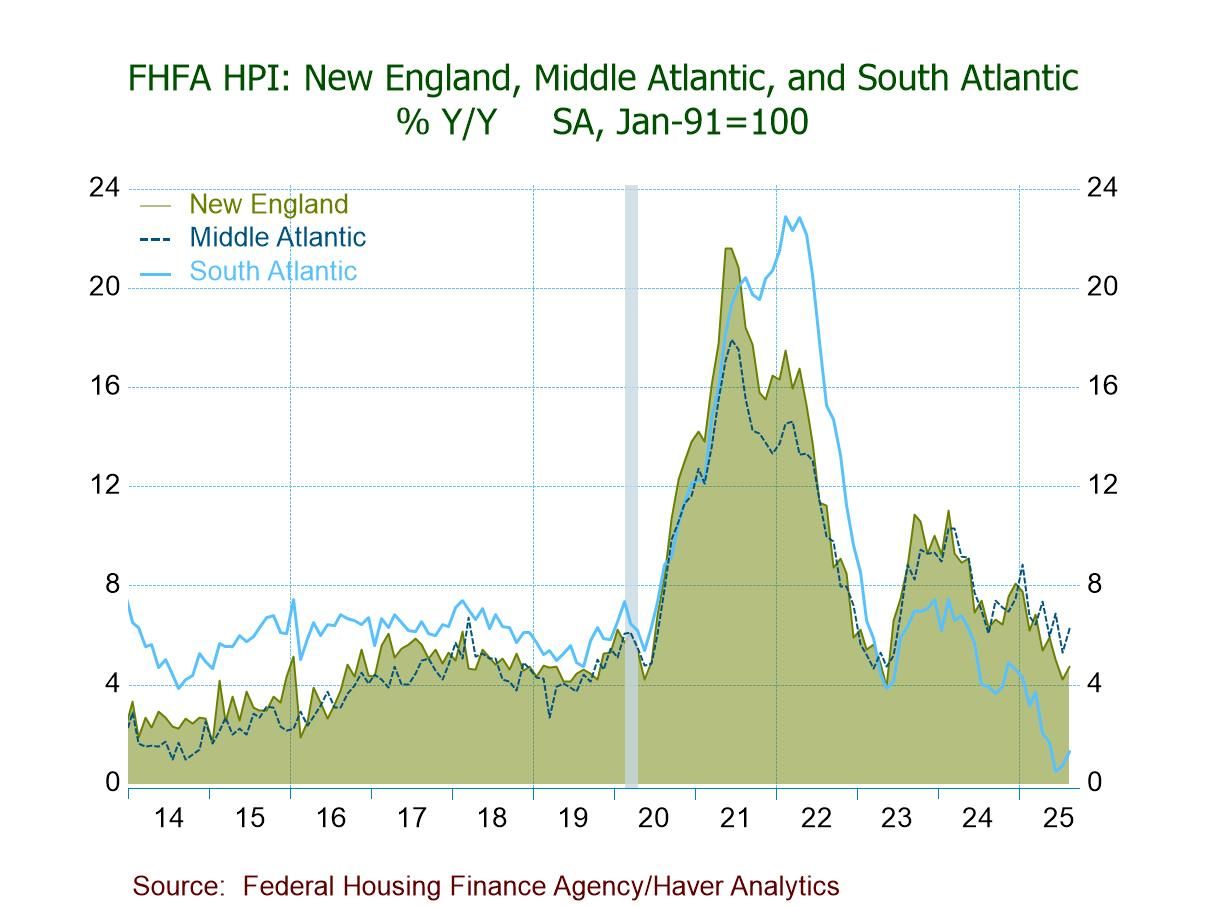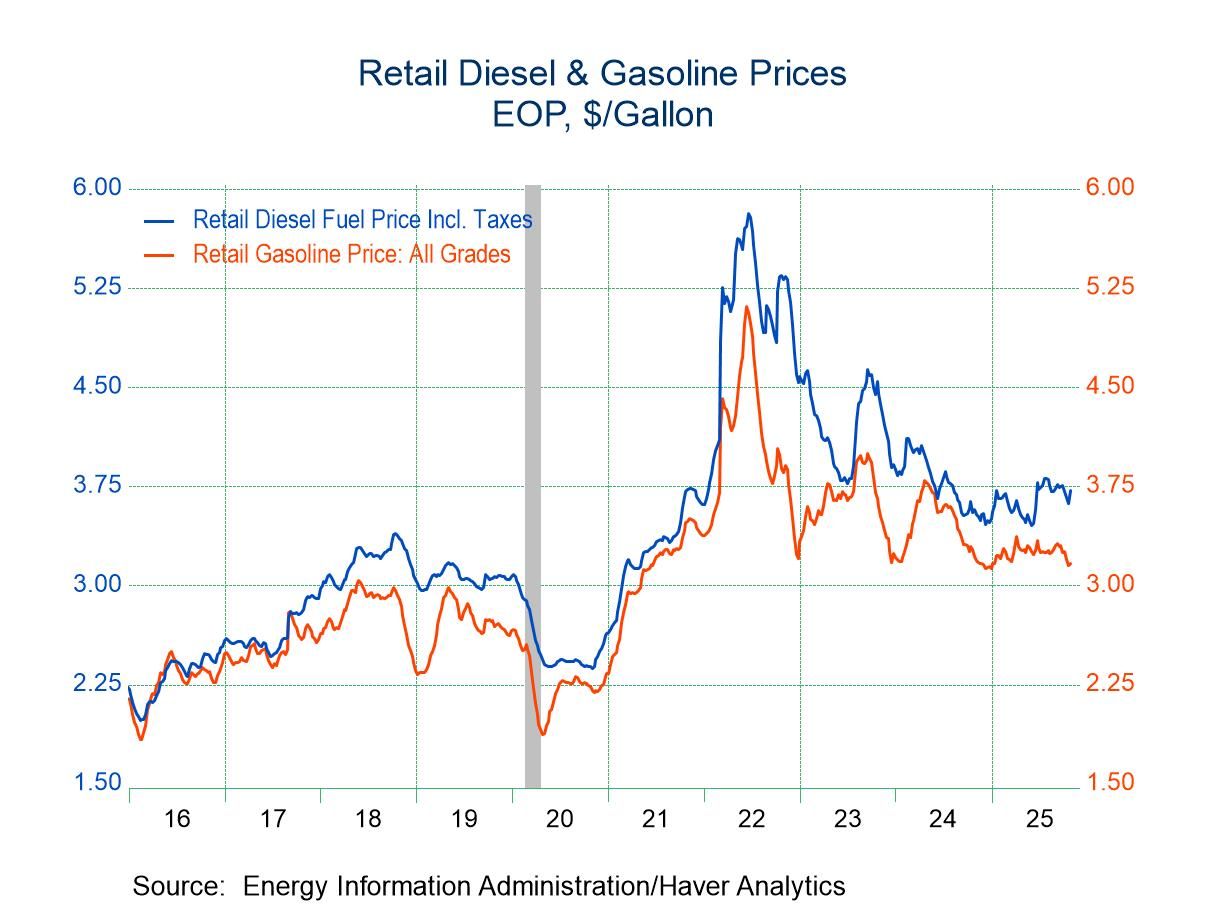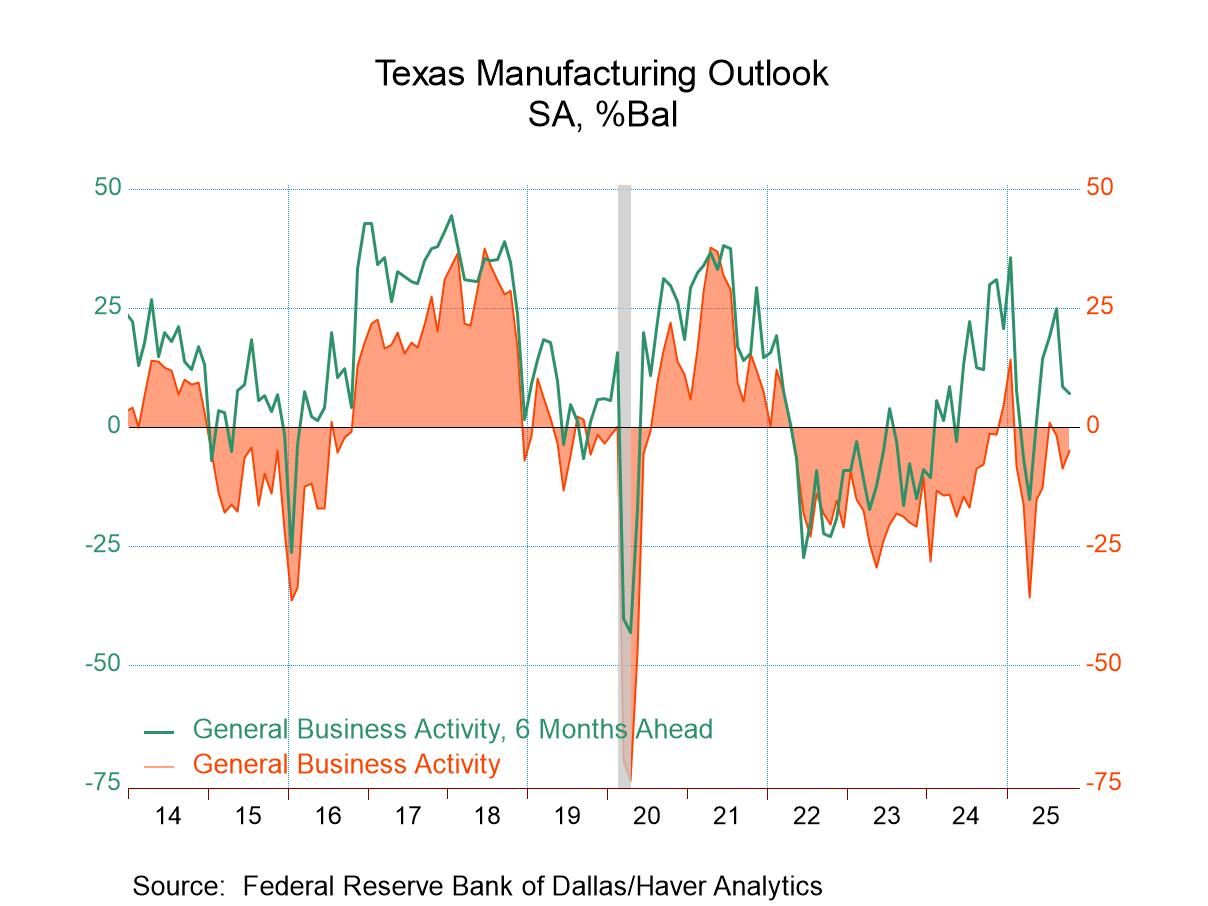 Global| Oct 07 2019
Global| Oct 07 2019NABE Lowers Real Growth Projections
by:Tom Moeller
|in:Economy in Brief
Summary
The National Association for Business Economics expects 1.8% growth in real GDP during 2020 and 2.3% in 2019, revised from 2.1% and 2.6%, respectively, in the prior forecast. Both of these growth rates are below the 2.9% gain in 2018. [...]
The National Association for Business Economics expects 1.8% growth in real GDP during 2020 and 2.3% in 2019, revised from 2.1% and 2.6%, respectively, in the prior forecast. Both of these growth rates are below the 2.9% gain in 2018. Quarterly growth is expected to average 1.8% next year, revised from 2.0%. It follows a quarterly average gain of 2.2% in 2019 and 3.0% in 2018. Growth in personal consumption expenditures is forecast to ease to an unrevised 2.3% in 2020, down from a raised estimate of 2.6% this year. Business fixed investment growth is expected to moderate to 2.1% in 2020, down from 2.9% during 2019. These figures are below earlier estimates. Expected growth of 0.7% in residential investment was unchanged, and improved, after a downwardly revised 2.1% estimated 2019 decline. Government spending growth is projected to rise at an upwardly revised estimate of 1.8% growth in 2020 and 2.2% growth in 2019. Deterioration in real net exports is forecast to continue, and by more than previously projected. Estimates on 2.8% import growth in 2020 and 2.1% export growth were downwardly revised. The expected rate of inventory investment was reduced, and still is forecast to slow to the lowest speed since 2017.
Housing starts are expected to average 1.26 million next year, revised from 1.28 million. That compares to a lessened forecast of 1.24 million starts this year. Expected light vehicle sales are expected to ease to an unrevised 16.6 million units, down from the peak of 17.5 million in 2016. The average monthly gain in payroll employment is expected to slow to 129,000 next year, which was lessened slightly. It remains below the average 164,000 gain expected this year and lower than the high of 251,000 averaged in 2014. Expectations for the unemployment rate in 2020 was raised slightly to 3.7%, still leaving it at the lowest level since 1968.
Consumer price inflation is forecast to average 2.1% (Q4/Q4) in 2020, unchanged from the earlier estimate. Price inflation next year, as measured by the PCE price index, should pick up to an unchanged estimate of 2.0% from a lessened estimate of 1.7% this year. The chain PCE price index excluding food & energy should rise to an unchanged projection of 2.0% next year (Q4/Q4) from 1.8% in 2019. It would be the quickest growth since 2007, up from the 2010 low of 0.9%. The cost of crude oil is expected to average $56 per barrel at the end of next year, higher than the low of $37 per barrel at the end of 2015.
The forecasted 2.00% interest rate on a ten-year Treasury note at the end of next year was reduced from the prior expectation of 2.90%. The expected 1.75% rate at the end of this year was reduced from 2.70%. The federal funds rate of 1.60% at the end of next year was reduced. After-tax corporate profits should rise 2.7% next year. That was lowered slightly from the previous forecast and would be below 6.3% growth in 2018. The expected Federal government budget deficit of $1.050 trillion next year was little changed and compares to $969 billion in FY'19.
The figures from the latest NABE report can be found in Haver's SURVEYS database.
| National Association For Business Economics | 2020 | 2019 | 2018 | 2017 | 2016 |
|---|---|---|---|---|---|
| Real GDP (% Chg. SAAR) | 1.8 | 2.3 | 2.9 | 2.2 | 1.6 |
| Personal Consumption Expenditures | 2.3 | 2.6 | 2.6 | 2.5 | 2.7 |
| Business Fixed Investment | 2.1 | 2.9 | 6.9 | 5.3 | 0.5 |
| Residential Investment | 0.7 | -2.1 | -0.3 | 3.3 | 6.5 |
| Gov't Consumption & Gross Investment | 1.8 | 2.2 | 1.5 | -0.1 | 1.4 |
| Change in Real Business Inventories (Bil. $) | 37.5 | 73.5 | 45.0 | 22.5 | 23.4 |
| Real Net Exports (Bil. $) | -1,021.9 | -980.8 | -912.2 | -858.7 | -786.2 |
| Housing Starts (Mil. Units) | 1.26 | 1.24 | 1.25 | 1.20 | 1.17 |
| Light Vehicle Sales (Mil. Units) | 16.6 | 16.8 | 17.2 | 17.1 | 17.5 |
| Payroll Employment Average Monthly Change (000s) | 129 | 164 | 223 | 179 | 193 |
| Civilian Unemployment Rate (%) | 3.7 | 3.8 | 3.9 | 4.4 | 4.9 |
| Chain Price Index for PCE (Q4/Q4 %) | 2.0 | 1.7 | 1.9 | 1.8 | 1.6 |
| Chain Price Index excl. Food & Energy (Q4/Q4 %) | 2.0 | 1.8 | 1.9 | 1.6 | 1.8 |
| Fed Funds Rate (%, Year-End) | 1.60 | 1.90 | 2.38 | 1.38 | 0.63 |
| 10-Year Treasury Note (%, Year-End) | 2.00 | 1.75 | 2.69 | 2.40 | 2.45 |
Tom Moeller
AuthorMore in Author Profile »Prior to joining Haver Analytics in 2000, Mr. Moeller worked as the Economist at Chancellor Capital Management from 1985 to 1999. There, he developed comprehensive economic forecasts and interpreted economic data for equity and fixed income portfolio managers. Also at Chancellor, Mr. Moeller worked as an equity analyst and was responsible for researching and rating companies in the economically sensitive automobile and housing industries for investment in Chancellor’s equity portfolio. Prior to joining Chancellor, Mr. Moeller was an Economist at Citibank from 1979 to 1984. He also analyzed pricing behavior in the metals industry for the Council on Wage and Price Stability in Washington, D.C. In 1999, Mr. Moeller received the award for most accurate forecast from the Forecasters' Club of New York. From 1990 to 1992 he was President of the New York Association for Business Economists. Mr. Moeller earned an M.B.A. in Finance from Fordham University, where he graduated in 1987. He holds a Bachelor of Arts in Economics from George Washington University.


